The Thrilling Adventure of Honey Hunting in Nepal
As an ancient skill passed down through generations, honey hunting exemplifies the deep connection between these communities and their environment.
As an ancient skill passed down through generations, honey hunting exemplifies the deep connection between these communities and their environment.
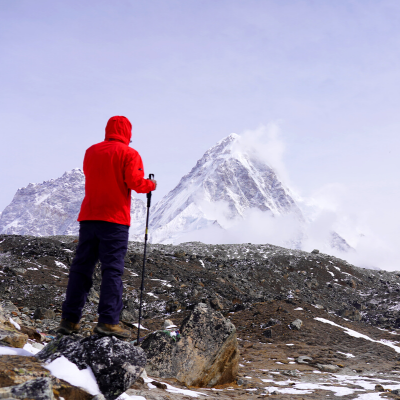
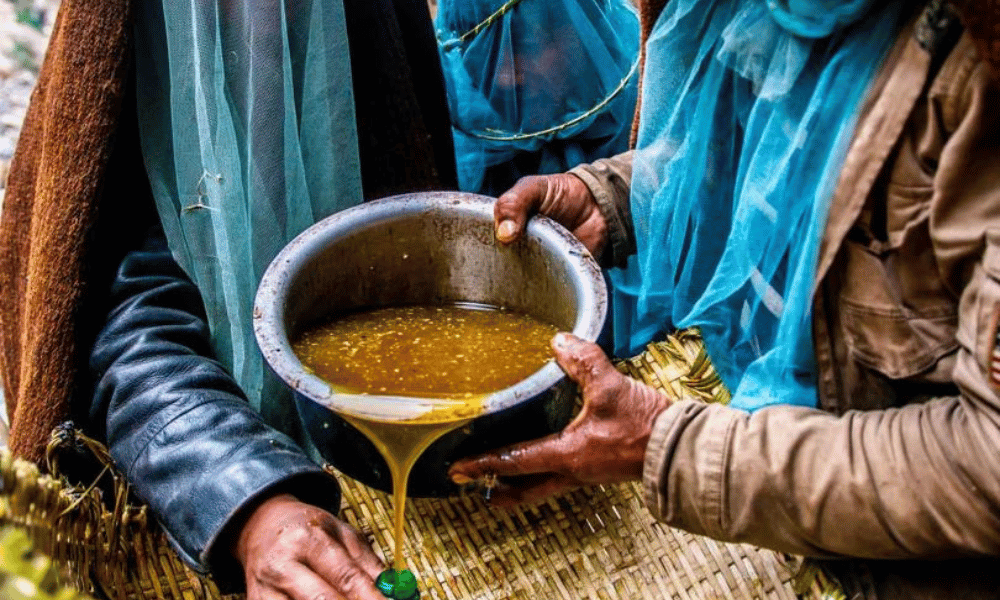
Honey hunting, a time-honored and culturally rich tradition in Nepal, has been practiced for centuries by indigenous tribes nestled in the remote hills and mountains of the country. This fascinating practice not only showcases exceptional skill and bravery but also reveals the deep connection between the local people and their environment. Passed down through generations, honey hunting has become an integral part of the cultural heritage of tribes like the Gurung and Magar, who have mastered the art of extracting the valuable nectar from perilous cliffside hives. Today, honey hunting continues to captivate both locals and visitors alike, offering a glimpse into an ancient tradition that is deeply rooted in Nepalese culture and history.
In Nepal, the Gurung and Magar tribes are renowned for their exceptional honey hunting skills, a testament to their intimate understanding of the rugged terrain and the giant Himalayan honey bees. Living in harmony with nature, these indigenous communities have honed their techniques over generations, perfecting a unique craft that has become an integral part of their cultural identity. Braving the steep cliffs and dizzying heights, the Gurung and Magar honey hunters exhibit unparalleled skill and courage, ensuring the continuation of this ancient tradition that is deeply woven into the fabric of their lives and the mystique of the Nepalese landscape.
Honey has long been valued for its medicinal properties and as a sought-after commodity in various cultures, including Nepal. Rich in antioxidants, vitamins, and minerals, honey is known to possess antibacterial, anti-inflammatory, and wound-healing properties, making it an essential ingredient in traditional medicine. In Nepal, honey is used as a natural remedy for a variety of ailments, such as colds, coughs, sore throats, and digestive issues. It is also believed to help boost the immune system, improve heart health, and provide a natural energy source. Additionally, honey produced from the nectar of certain plants, like rhododendrons, has psychoactive properties, giving it the name "mad honey." Consumed in small quantities, mad honey is said to have therapeutic effects, such as relieving hypertension and providing pain relief. However, in larger amounts, it can lead to hallucinations and, in extreme cases, toxicity.
Beyond its medicinal uses, honey is a valuable commodity that plays a vital role in the local economy. Harvested honey is often sold or bartered for other goods, providing a crucial source of income for many honey hunting communities. Furthermore, with the growing interest in sustainable and eco-tourism, honey hunting has attracted visitors from around the world, generating additional income and preserving this ancient tradition for future generations.
Embark on a thrilling journey into the heart of Nepal, where the majestic mountains meet ancient traditions, and uncover the exhilarating world of honey hunting. This captivating adventure will take you off the beaten path, where daring locals scale sheer cliffs and confront formidable honeybees to harvest their precious nectar. As you delve into the untamed beauty of the Nepalese landscape, you'll witness the incredible skill, courage, and determination of the Gurung and Magar tribes, as they deftly navigate their vertiginous environment and uphold a time-honored practice deeply rooted in their culture.
Join us as we explore this fascinating aspect of Nepalese heritage, delving into the history, techniques, and challenges of honey hunting. Along the way, we'll examine the significance of honey as both a medicinal treasure and a valuable commodity, as well as the role it plays in sustaining local communities and attracting global interest.
Prepare yourself for an unforgettable adventure, where the rugged landscapes of Nepal provide the perfect backdrop for a mesmerizing tale of skill, bravery, and resilience. Immerse yourself in the world of honey hunting and discover the captivating traditions and stories that make this ancient practice a truly unique and exhilarating experience.
The history and cultural significance of honey hunting in Nepal are deeply rooted in the customs and beliefs of indigenous communities, particularly the Gurung and Magar tribes. This ancient practice has been passed down through generations and holds immense cultural value for these communities.
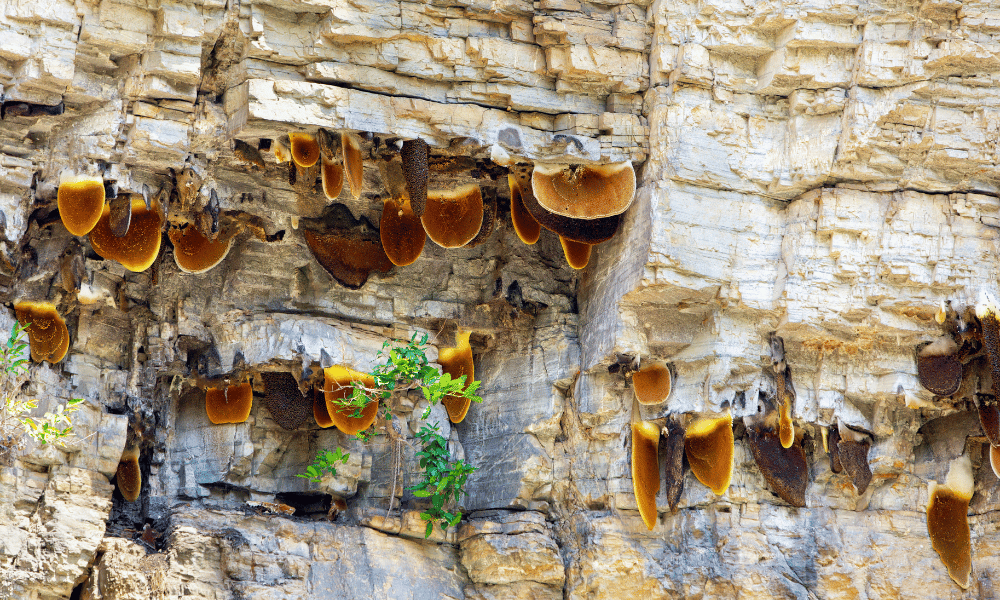
History:
Honey hunting in Nepal dates back thousands of years and is believed to have originated during prehistoric times. Ancient rock paintings and inscriptions found in Nepal and neighboring regions depict honey hunters scaling cliffs to harvest honey from wild bees. Over time, the knowledge and skills required for honey hunting have been passed down through generations, with each generation refining the techniques and adapting to the changing environment.
Cultural Significance:
Honey hunting is more than just a means of obtaining honey; it is an integral part of the culture and identity of indigenous communities in Nepal. Several aspects contribute to its cultural significance:
Rituals and ceremonies: Honey hunting is often accompanied by various rituals and ceremonies performed to seek protection and blessings from local deities. These rituals are essential to the honey hunting process and signify the strong connection between the communities and their spiritual beliefs.
Livelihoods and social structure: Honey hunting provides a crucial source of income for many indigenous communities in Nepal. The sale and trade of honey support their livelihoods and reinforce the social structure, with experienced honey hunters often holding positions of respect and authority within their communities.
Traditional knowledge and skills: The techniques and tools used in honey hunting have been developed and refined over generations, reflecting the deep understanding and connection these communities have with their environment. This traditional knowledge is an invaluable part of their cultural heritage and showcases their resilience and adaptability.
Medicinal and cultural uses of honey: Honey has been used for various medicinal and cultural purposes in Nepal for centuries. The unique properties of wild honey, including its antimicrobial, anti-inflammatory, and antioxidant qualities, have been recognized and utilized in traditional medicine. Honey is also used in religious ceremonies and as a valuable gift to honor guests or mark special occasions.
Connection to nature: Honey hunting fosters a deep connection with nature and the environment, as communities rely on the survival of the giant Himalayan honey bee and the preservation of their habitats. This relationship reinforces the importance of sustainable practices and environmental conservation in maintaining their way of life.
The history and cultural significance of honey hunting in Nepal highlight the intricate relationship between indigenous communities, their environment, and their beliefs. It is essential to support and preserve this ancient tradition by promoting responsible and sustainable honey hunting practices and ensuring that the knowledge and skills of honey hunters are passed down to future generations.
The origins of honey hunting in Nepal can be traced back centuries, to a time when indigenous tribes living in the remote regions of the country first discovered the valuable properties of honey. Although the exact timeline is difficult to ascertain, it is believed that honey hunting has been practiced for thousands of years, passed down through generations as an essential skill and cultural tradition.
Nepal's rugged terrain and diverse flora provide the perfect habitat for the giant Himalayan honey bee (Apis laboriosa), the world's largest honeybee species. These bees build their massive hives on steep cliffs, away from predators and human settlements, which makes accessing the honey a challenging and dangerous task. The Gurung and Magar tribes, living in the foothills of the Himalayas, developed specialized techniques to harvest the honey from these precarious locations, demonstrating an extraordinary level of skill and courage.
Honey hunting's cultural significance likely arose from the various uses of honey, including its medicinal properties, nutritional value, and as a valuable commodity that could be traded or sold. As a result, honey hunting became an integral part of the livelihood and identity of these indigenous communities, ensuring the continuity of this ancient practice.
Over time, the art of honey hunting has evolved, adapting to changes in the environment, technology, and social dynamics. However, the core principles and values of honey hunting remain deeply ingrained in the cultural fabric of the Gurung and Magar tribes, preserving this ancient tradition and offering a unique glimpse into the rich heritage of Nepal.
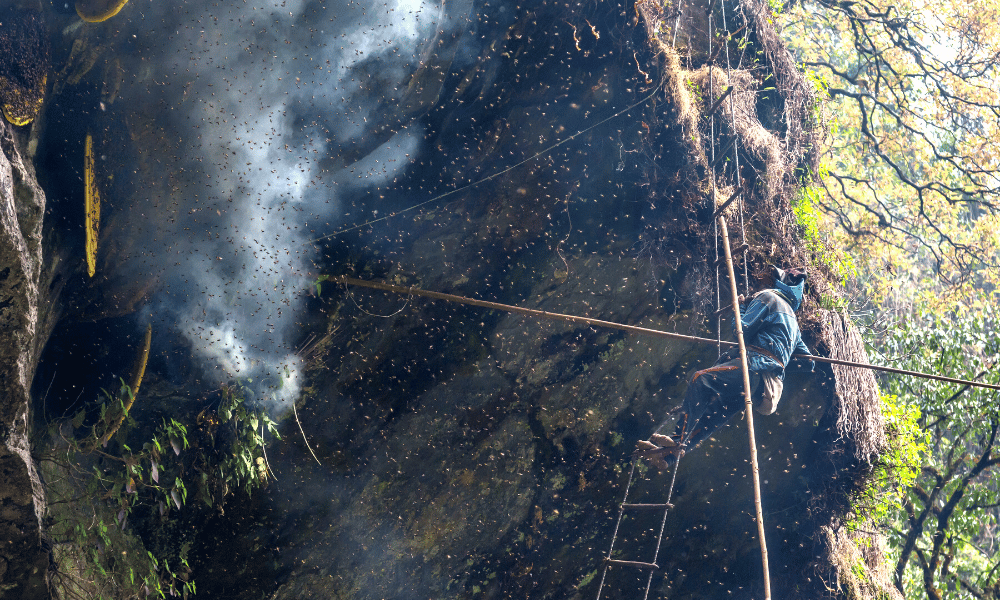
Honey hunting plays a significant role in the local communities of Nepal, particularly among the Gurung and Magar tribes, influencing their livelihoods, social structure, and beliefs.
Livelihood and Economy: Honey hunting contributes to the local economy by providing a valuable source of income for the communities involved. The harvested honey is often sold or bartered for other goods, helping to sustain the livelihood of honey hunters and their families. In recent years, the growing interest in ecotourism has attracted international visitors to witness and participate in honey hunting expeditions, further boosting the local economy and raising awareness about this ancient tradition.
Social Structure: Honey hunting fosters a strong sense of community and cooperation among the local people. The process requires teamwork, coordination, and trust, as honey hunters rely on each other for safety and support while navigating the treacherous cliffs. Honey hunting also plays a role in defining social roles and status within the community, with experienced hunters often holding positions of respect and authority.
Cultural and Spiritual Beliefs: Honey hunting is deeply intertwined with the spiritual beliefs of the indigenous tribes. Many communities hold rituals and ceremonies prior to the honey hunting expeditions, seeking blessings and protection from their deities. Some tribes also believe that the giant Himalayan honey bees are the messengers of gods, further emphasizing the sacred nature of honey hunting. These spiritual connections help to preserve the cultural significance of honey hunting and maintain a harmonious relationship between the people and their environment.
Honey hunting holds great importance in preserving local traditions and practices among the indigenous communities of Nepal, particularly the Gurung and Magar tribes. This ancient tradition serves as a living link to the past, allowing these communities to maintain a strong connection to their cultural heritage and ancestral knowledge.
Cultural Identity: Honey hunting is a unique cultural practice that sets these communities apart, helping them preserve their distinct identity in the face of modernization and globalization. By continuing to practice honey hunting, the Gurung and Magar tribes are able to pass down their knowledge, techniques, and values to future generations, ensuring the survival of their cultural identity.
Traditional Knowledge: Honey hunting requires a deep understanding of the local environment, including the behavior of the giant Himalayan honey bees, the seasonal patterns, and the diverse flora of the region. By engaging in honey hunting, these communities preserve and transmit valuable traditional knowledge about their natural surroundings, which could otherwise be lost over time.
Community Cohesion: Honey hunting fosters a sense of community and cooperation, as it requires teamwork and coordination among the hunters. This collaborative aspect of honey hunting helps to strengthen social bonds and maintain a sense of unity within the community. The sharing of skills and responsibilities across generations also ensures that the practice remains relevant and viable.
Eco-tourism and Cultural Exchange: The growing interest in sustainable tourism and cultural experiences has brought international attention to honey hunting in Nepal. This has provided opportunities for cultural exchange, raising awareness about the importance of preserving local traditions and practices. Moreover, eco-tourism can generate additional income for these communities, enabling them to maintain their traditional way of life while benefiting from modern economic opportunities.
The honey hunting process in Nepal is a complex and fascinating tradition that has been passed down through generations. It involves several steps and requires a great deal of skill, teamwork, and bravery. Here's an overview of the honey hunting process:
Identifying bee colonies: Honey hunters scout the surrounding areas to locate the nests of the giant Himalayan honey bee (Apis laboriosa), often found on steep cliffs and rock faces. This process can involve trekking through difficult terrain and dense forests.
Preparations: Once a suitable colony is identified, honey hunters make necessary preparations, which may include performing rituals and ceremonies to seek protection and blessings from the local deities. They also gather essential tools and materials, such as rope ladders, bamboo poles, baskets, and knives.
Scaling the cliffs: Honey hunters must scale the steep cliffs to reach the bee colonies. They use handmade rope ladders, bamboo scaffolding, or a combination of both to climb the cliffs. This is a dangerous task, as the climbers risk falling from great heights.
Subduing the bees: To minimize the risk of being stung, honey hunters use smoke to subdue the bees. They burn dried leaves or grass, sometimes mixed with buffalo dung, in a metal container or torch, producing a thick smoke that is directed toward the bee colony.
Harvesting the honey: While the bees are subdued, a honey hunter carefully cuts the honeycomb from the cliff face using a long bamboo pole or knife. This requires precision and skill to avoid damaging the honeycomb or provoking the bees. The honeycomb is then carefully placed in a basket or bag, which is lowered to the ground.
Extraction and processing: Once the honeycomb has been harvested, honey hunters extract the honey from the comb. This often involves manually squeezing the honeycomb and straining the honey through a cloth to remove debris and beeswax. The beeswax is collected separately and used for various purposes, such as candle making or medicinal applications.
Sharing the harvest: The harvested honey is typically shared among the honey hunting community, with a portion often sold or traded to support their livelihoods. The honey is considered a valuable commodity due to its unique taste, medicinal properties, and the inherent dangers and challenges involved in the harvesting process.
The honey hunting process is a remarkable display of skill, bravery, and teamwork, deeply rooted in the cultural heritage of indigenous communities in Nepal. Supporting and promoting responsible and sustainable honey hunting practices is essential to preserving this ancient tradition and ensuring the well-being of the honey hunting communities and the giant Himalayan honey bee populations.
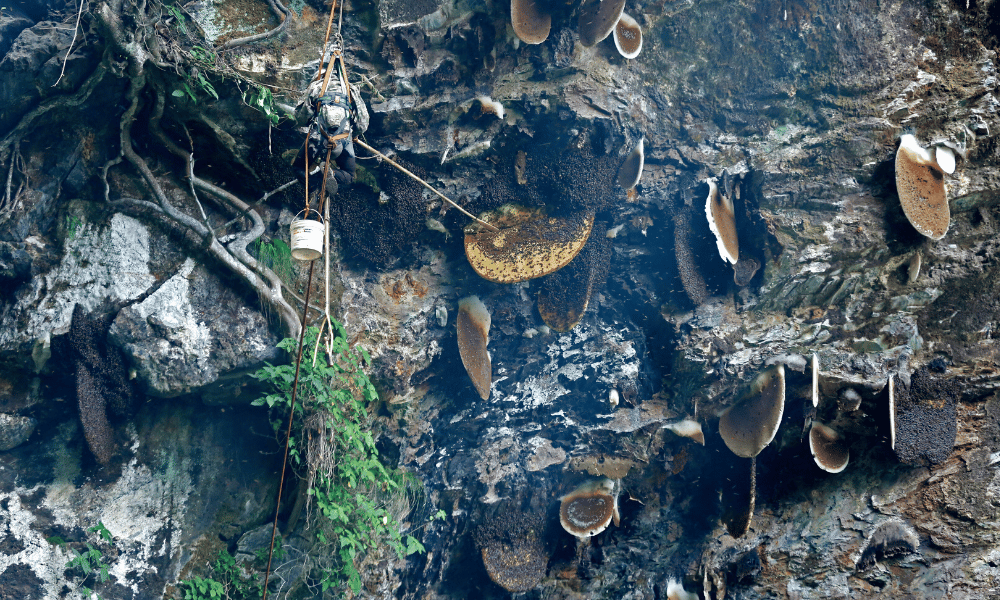
The season and timing of honey hunting expeditions in Nepal are crucial factors that determine the success and safety of the harvest. Honey hunting typically takes place twice a year, during the spring and autumn seasons, when the giant Himalayan honey bees are most active in producing honey.
Spring Season: The spring honey hunting season usually occurs between late April and early June. During this time, the Himalayan region is abundant with blooming flowers, providing ample nectar for the honeybees to collect. The honey produced in the spring season is known for its light color, mild taste, and high nutritional value. Spring is also the season when the "mad honey" is harvested, as rhododendron flowers, which contain the psychoactive compound grayanotoxin, are in full bloom.
Autumn Season: The autumn honey hunting season takes place between late September and early November. As the monsoon season comes to an end, the honeybees once again become active, collecting nectar from the diverse flora in the region. Honey harvested during the autumn season tends to be darker in color and has a stronger taste compared to the spring harvest.
The timing of honey hunting expeditions is not only determined by the flowering season but also by the lunar calendar, local customs, and weather conditions. Many indigenous communities, like the Gurung and Magar tribes, consider auspicious dates based on the lunar calendar before embarking on their honey hunting expeditions. Additionally, favorable weather conditions are essential for a successful and safe honey harvest, as the hunters need to navigate steep cliffs and work at great heights.
Before embarking on a honey hunting expedition, the indigenous communities in Nepal undertake several preparations to ensure the safety and success of the harvest. These preparations often involve rituals, ceremonies, and practical measures that reflect the cultural and spiritual beliefs of the communities, as well as their deep understanding of the challenges associated with honey hunting.
Rituals and Ceremonies: Many honey hunting communities, such as the Gurung and Magar tribes, perform religious rituals and ceremonies to seek blessings and protection from their deities. These ceremonies may involve offerings, prayers, and the participation of local shamans or priests. The purpose of these rituals is to invoke divine assistance, ward off bad luck, and ensure a safe and successful honey harvest.
Choosing an Auspicious Date: The honey hunters often select an auspicious date for the expedition based on the lunar calendar and local customs. This practice stems from the belief that starting the hunt on a favorable day will increase the likelihood of a bountiful harvest and minimize potential risks.
Assembling the Team: A honey hunting expedition requires a well-coordinated team of experienced hunters, assistants, and support members. The team is usually led by an experienced honey hunter who is responsible for making decisions and ensuring the safety of the group. The team members are selected based on their skills, experience, and their roles in the community.
Gathering Tools and Equipment: The honey hunters prepare the necessary tools and equipment required for the expedition, such as bamboo ladders, ropes, baskets, knives, and protective gear. These tools are often handmade and reflect the traditional techniques used by the indigenous communities. The honey hunters also gather materials to create smoke, such as dried leaves and twigs, which are used to subdue the bees during the harvest.
Planning the Route and Logistics: The honey hunters carefully plan the route to the honey hunting site, taking into consideration the terrain, accessibility, and the location of the hives. They also arrange for the transportation of the harvested honey, ensuring that it can be safely brought back to the village for consumption or sale.
By carrying out these preparations, the honey hunting communities in Nepal demonstrate their respect for the challenges and risks associated with the practice, as well as their commitment to preserving their cultural and spiritual traditions. These measures help to ensure the safety and success of the honey hunting expeditions, while also maintaining a harmonious relationship with nature and the divine.
Honey hunters in Nepal employ a range of traditional tools and techniques to safely and effectively harvest honey from the giant Himalayan honey bees. These tools and techniques have been honed over generations and reflect the indigenous communities' deep understanding of their environment and the unique challenges posed by honey hunting.
Bamboo Ladders: One of the primary tools used by honey hunters is the bamboo ladder. These ladders are made by tying bamboo poles together with sturdy ropes or vines, creating a long, flexible structure that can be anchored to the cliff face. The honey hunters use these ladders to scale the steep cliffs where the honeybees build their massive hives.
Ropes and Harnesses: Ropes made from natural fibers, such as hemp or jute, are used to secure the bamboo ladders and create harnesses for the honey hunters. These ropes provide essential support and safety while navigating the treacherous terrain and working at great heights.
Long Poles and Knives: Honey hunters use long poles, often made from bamboo or wood, with a sharp knife or sickle attached to one end. This tool is used to carefully cut the honeycomb from the hive while maintaining a safe distance from the bees. The honeycomb is then collected in a basket or other container.
Protective Gear: The honey hunters wear protective clothing and gear to shield themselves from bee stings and other hazards. This may include thick clothing, gloves, hats, and veils or masks made from natural materials. Some honey hunters also use smoke as a means of protection, as it helps to subdue the bees and reduce the risk of being stung.
Smoke: Smoke is an essential tool in honey hunting, as it helps to calm the bees and make the harvesting process safer. Honey hunters create smoke by burning dried leaves, twigs, or other combustible materials in a container or torch. The smoke is then directed towards the hive, causing the bees to become more docile and less likely to attack.
Baskets and Containers: Once the honeycomb has been harvested, it is collected in baskets or other containers made from bamboo, wood, or woven plant materials. These containers are designed to safely transport the honeycomb back to the village, where it can be processed and consumed or sold.
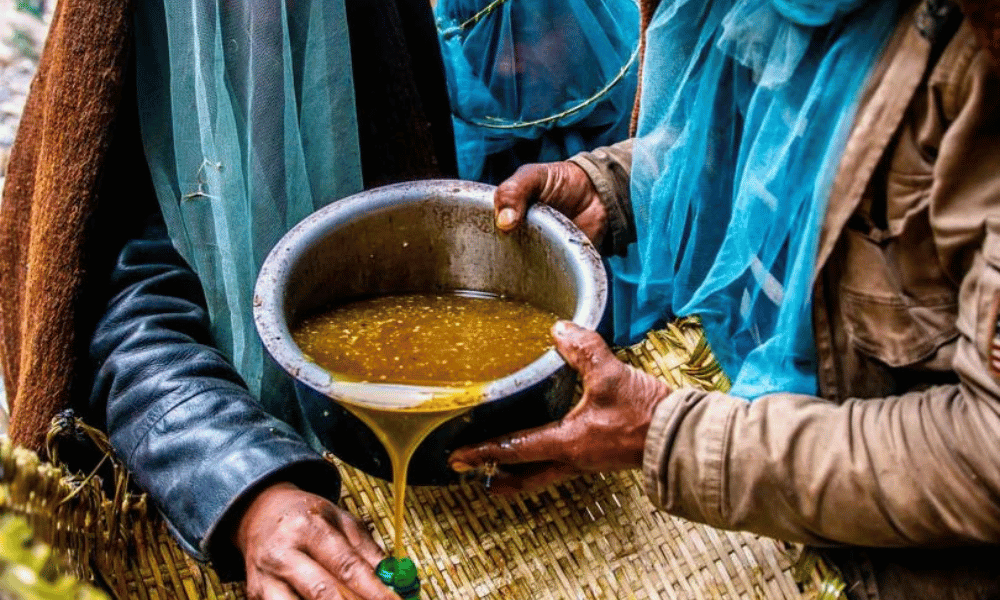
These traditional tools and techniques used by honey hunters in Nepal demonstrate their remarkable skill, ingenuity, and adaptability in the face of challenging environmental conditions. By employing these methods, the indigenous communities are able to sustainably harvest honey while preserving their cultural heritage and maintaining a harmonious relationship with nature.
Teamwork and coordination play a crucial role in honey hunting, as the success and safety of the expedition depend on the collective efforts and collaboration of the entire group. Given the challenging and potentially dangerous nature of honey hunting, the indigenous communities in Nepal have developed strong bonds of trust and cooperation, ensuring that each member of the team contributes effectively to the shared goal of harvesting honey.
Division of Roles and Responsibilities: Each member of the honey hunting team has a specific role and responsibility, depending on their skills and experience. The team is typically led by an experienced honey hunter, who makes decisions and oversees the entire operation. Other team members may be responsible for climbing the cliffs, cutting the honeycomb, creating smoke, handling the ropes, or providing support on the ground.
Communication and Coordination: Effective communication and coordination among team members are essential for a successful honey hunting expedition. The honey hunters use verbal signals, gestures, or other means of communication to relay information and instructions, ensuring that everyone is aware of the current situation and can respond accordingly. This level of coordination helps to minimize risks and maximize efficiency during the harvesting process.
Trust and Reliability: Honey hunting requires a great deal of trust and reliability among team members. Climbing steep cliffs and working at great heights exposes the hunters to potential hazards, and they must rely on one another for support and safety. This trust is built over time through shared experiences and a strong sense of community.
Knowledge Sharing and Skill Development: The art of honey hunting is passed down through generations, with experienced hunters teaching the younger members of the community the necessary skills and techniques. This process of knowledge sharing and skill development helps to ensure the continuity of honey hunting traditions while fostering a sense of teamwork and collaboration among the community members.
Community Involvement: The success of a honey hunting expedition often extends beyond the immediate team members, involving the entire community in various ways. The harvested honey is used for consumption, medicinal purposes, or as a valuable commodity that benefits the entire community. Moreover, the sense of accomplishment and pride derived from a successful honey hunt strengthens social bonds and reinforces the importance of teamwork and cooperation.
Honey hunting in Nepal is an ancient tradition, and while it is a fascinating cultural practice, it also involves various dangers and challenges that honey hunters must overcome to harvest the precious honey from the giant Himalayan honey bees. Some of the main dangers and challenges include:
Steep cliffs: Honey hunting often takes place on sheer cliffs, with honey hunters scaling great heights using handmade rope ladders or bamboo scaffolding to reach the bee colonies. The risk of falls and accidents is high due to the precarious nature of these climbing methods.
Bee stings: Honey hunters face the threat of being stung by thousands of bees while attempting to harvest the honey. Protective clothing is often minimal, and stings can lead to severe allergic reactions, pain, and swelling.
Smoke inhalation: Honey hunters use smoke to subdue the bees during the harvest, which can result in smoke inhalation and respiratory issues for the honey hunters.
Difficult terrain: The remote locations where honey hunting takes place often involve challenging treks through dense forests, steep trails, and high altitudes, which can be physically demanding and exhausting.
Unpredictable weather: The mountainous regions where honey hunting occurs are prone to unpredictable weather conditions, such as sudden rainstorms, strong winds, or temperature fluctuations, which can increase the risk of accidents and make the honey harvest more difficult.
Limited resources: Honey hunting communities often have limited access to modern climbing equipment, medical facilities, and communication systems, making it challenging to address emergencies and accidents.
Environmental threats: Deforestation, climate change, and habitat loss pose threats to the giant Himalayan honey bee populations, making it more difficult for honey hunters to find suitable locations for honey harvesting.
Sustainable harvesting: Ensuring that honey harvesting is sustainable and does not harm bee populations or their habitats can be challenging, particularly as demand for honey increases due to growing interest in the practice
Despite these dangers and challenges, honey hunters continue to practice this ancient tradition, showcasing their incredible skills, bravery, and resilience. It is essential to support these communities and promote responsible and sustainable honey hunting practices to preserve this unique cultural heritage and protect the giant Himalayan honey bee and its habitat.
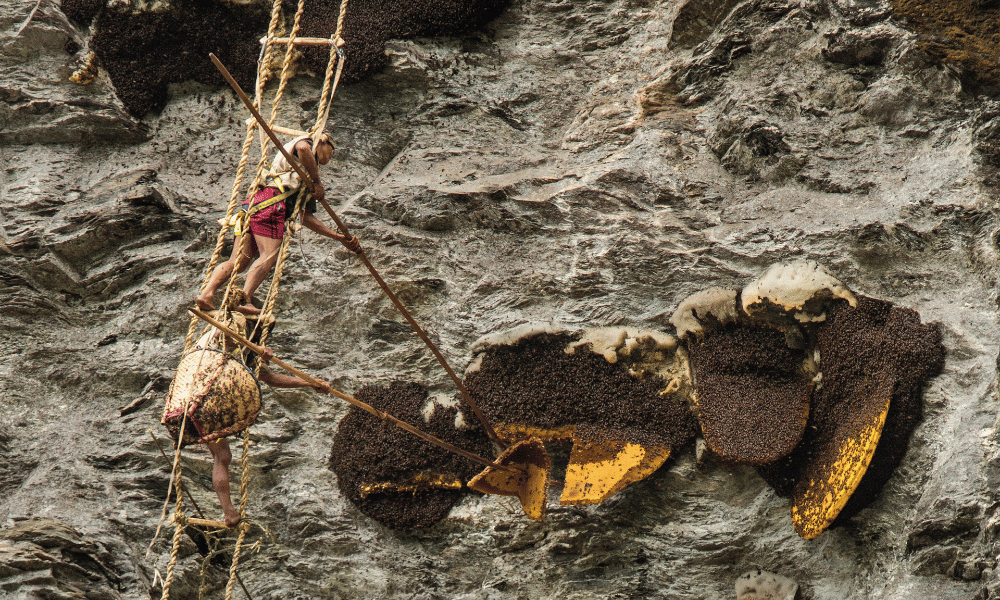
Honey hunting is an ancient practice that involves significant risks and challenges, primarily due to the dangerous terrain and the nature of the giant Himalayan honey bees. Some of the primary risks associated with honey hunting are:
Falls: One of the most significant risks involved in honey hunting is the potential for falls. Honey hunters climb steep cliffs and work at great heights to access the hives, often using handmade bamboo ladders and ropes. The terrain can be slippery, especially during the rainy season, and accidents can occur if the hunters lose their footing or if the ladders or ropes fail.
Bee Stings: Honey hunters face the constant risk of being stung by the giant Himalayan honey bees while harvesting the honeycombs. These bees are known for their aggressive behavior when their hives are threatened, and they can swarm the hunters in large numbers. Multiple stings can cause severe pain, swelling, and, in some cases, serious allergic reactions or anaphylactic shock.
Mad Honey Poisoning: Some honey harvested from the giant Himalayan honey bees, particularly during the spring season, contains grayanotoxin, a psychoactive compound found in the nectar of rhododendron flowers. Consumption of this "mad honey" can lead to symptoms such as dizziness, nausea, vomiting, and, in severe cases, hallucinations, seizures, or even death.
Exhaustion and Dehydration: Honey hunting is physically demanding and requires a high level of stamina and endurance. Honey hunters often hike for hours or even days to reach the hunting sites, carrying heavy equipment and supplies. The risk of exhaustion, dehydration, and heatstroke is heightened by the challenging terrain and the physical demands of the task.
Wildlife Encounters: Honey hunting expeditions often take place in remote and wild areas, where encounters with wildlife such as bears, leopards, or snakes can pose additional risks. While these encounters are generally rare, honey hunters must remain vigilant and prepared to handle any unexpected situations.
Despite these risks, honey hunters in Nepal have developed a range of techniques and practices to minimize the dangers and ensure their safety. They rely on teamwork, coordination, and their deep understanding of the environment and the honeybees to navigate these challenges. Protective gear, smoke to subdue the bees, and careful planning also play a crucial role in mitigating the risks associated with honey hunting.
Reaching remote cliffside hives presents several difficulties for honey hunters in Nepal. The giant Himalayan honey bees often build their massive hives on sheer cliff faces, at elevations of up to 2,500 meters (8,200 feet). The remote and treacherous nature of these locations poses unique challenges for the honey hunters, which include:
Rugged Terrain: The Himalayan region features steep slopes, narrow trails, and rocky outcrops, making it challenging to navigate and access the cliffside hives. Honey hunters must be skilled climbers and possess a high level of physical fitness to traverse this difficult terrain.
Long Distances: Remote cliffside hives can be located several hours or even days away from the honey hunters' villages. These expeditions often require long treks through dense forests, across rivers, and over mountain passes, which can be physically demanding and exhausting.
Altitude: The high elevation of the Himalayan region can pose challenges related to altitude sickness, including headaches, dizziness, and shortness of breath. Honey hunters must acclimatize to the altitude gradually to avoid severe symptoms and complications.
Unpredictable Weather: The weather in the Himalayas can be unpredictable, with sudden changes in temperature, rainfall, and visibility. Honey hunters must be prepared to face these weather conditions and adapt their plans accordingly, as adverse weather can increase the risks associated with climbing and harvesting honey.
Transporting Equipment and Supplies: Honey hunters need to carry various tools and supplies, such as bamboo ladders, ropes, protective gear, and containers for the honeycombs. Transporting this equipment over long distances and through difficult terrain can be challenging and requires careful planning and coordination.
Limited Resources: In remote areas, honey hunters may have limited access to resources such as food, water, and shelter. They must plan their expeditions carefully to ensure they have adequate provisions to sustain them during their journey and while harvesting the honey.
The threat of deforestation and climate change on bee populations and honey production
Deforestation and climate change are growing concerns worldwide, and they pose significant threats to bee populations and honey production, particularly in Nepal and other regions with diverse ecosystems.
Deforestation: Deforestation leads to habitat loss and fragmentation, which can have severe consequences for bee populations. As forests are cleared for agriculture, urbanization, or other purposes, bees lose their natural nesting sites and the diverse range of plants they rely on for foraging. This can lead to a decline in bee populations, reducing their ability to pollinate plants and, in turn, affecting honey production.
Climate Change: Climate change impacts bees and honey production in several ways:
a. Changes in Temperature: As temperatures rise, bees may struggle to adapt to the changing conditions. Extreme temperatures can affect their behavior, metabolism, and reproduction, leading to a decline in bee populations. Additionally, temperature changes can impact the flowering patterns of plants, disrupting the availability of nectar and pollen resources for bees.
b. Changes in Precipitation: Alterations in precipitation patterns due to climate change can affect the availability and distribution of nectar-producing plants. Droughts or excessive rainfall can lead to reduced nectar production, negatively impacting bee populations and honey production.
c. Phenological Shifts: Climate change can cause phenological shifts, altering the timing of plant blooming and the availability of nectar and pollen resources. If these shifts are not synchronized with the bees' life cycle, it can result in a decline in bee populations and reduced honey production.
d. Extreme Weather Events: Climate change increases the frequency and intensity of extreme weather events such as storms, floods, and droughts. These events can damage bee habitats, disrupt their foraging patterns, and cause population declines.
Indirect Effects: Deforestation and climate change can also have indirect effects on bee populations and honey production by increasing the prevalence of pests, diseases, and invasive species. These factors can further stress bee populations, making them more vulnerable to population declines and negatively impacting honey production.
To mitigate these threats and protect bee populations and honey production, it is essential to implement sustainable land management practices, promote habitat conservation and restoration, and address the root causes of climate change. By working together to address these challenges, communities can help preserve the vital role bees play in pollination, honey production, and maintaining healthy ecosystems.
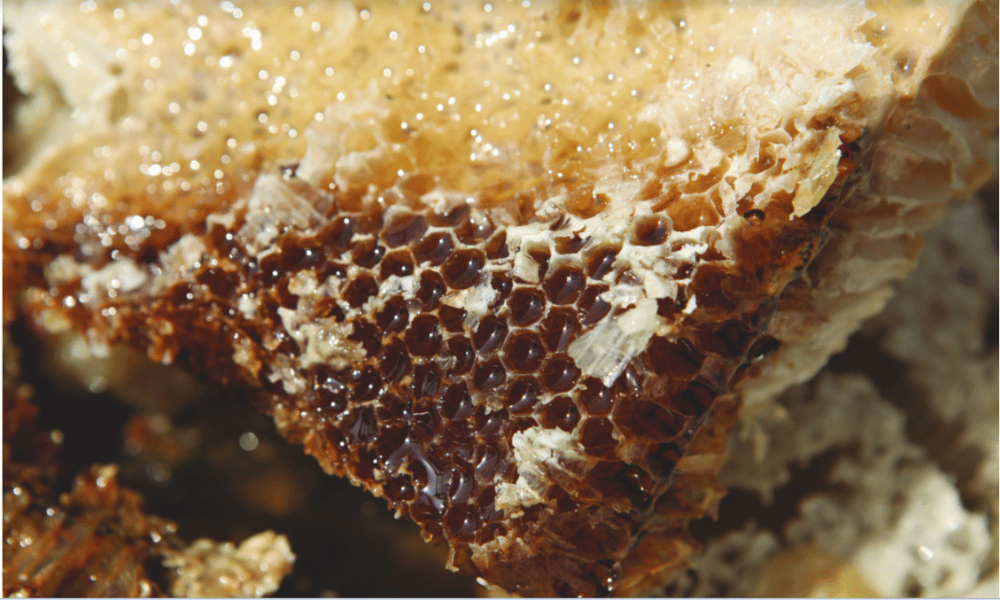
Honey is a natural sweetener produced by bees from the nectar of flowers. It has been used for centuries for its flavor, nutritional value, and medicinal properties. There are various types of honey, each with unique characteristics and uses, depending on the floral source and the region in which it is produced. Some of the most common types of honey and their uses include:
Clover Honey: One of the most popular and widely available types of honey, clover honey is light in color and has a mild, sweet flavor. It is commonly used as a table honey for sweetening beverages, spreading on toast, or drizzling over yogurt and fruit.
Manuka Honey: Produced in New Zealand from the nectar of the Manuka tree, this honey is well-known for its potent antibacterial and antimicrobial properties. It is often used topically to treat wounds, burns, and skin infections, as well as taken internally to boost the immune system and improve digestion.
Buckwheat Honey: With a dark color and a strong, robust flavor, buckwheat honey is rich in antioxidants and nutrients. It is often used as a natural sweetener in baked goods and sauces and is believed to have anti-inflammatory and immune-boosting properties.
Acacia Honey: Produced from the nectar of the black locust tree, acacia honey is light in color, with a mild, floral flavor. It is known for its low sucrose content, making it a popular choice for people with diabetes or those looking for a natural sweetener with a low glycemic index.
Eucalyptus Honey: Derived from the nectar of eucalyptus trees, this honey has a distinct, herbal flavor and a slightly darker color. It is often used for its antibacterial and antiviral properties, as well as to help soothe coughs and colds.
Orange Blossom Honey: Produced from the nectar of citrus trees, orange blossom honey has a light, citrusy flavor and aroma. It is commonly used as a natural sweetener in desserts, beverages, and salad dressings.
Wildflower Honey: Also known as polyfloral honey, wildflower honey is made from the nectar of various flowers and plants. Its flavor, color, and aroma can vary depending on the specific mix of flowers and the region in which it is produced. Wildflower honey is often used for its allergy-relief properties, as consuming local wildflower honey may help build immunity to pollen allergens.
Himalayan Honey: Harvested from the giant Himalayan honeybees in the mountainous regions of Nepal, Himalayan honey is known for its unique flavor and potential medicinal properties. Some varieties, like "mad honey," contain grayanotoxins and are valued for their psychoactive effects.
These are just a few examples of the many types of honey available, each with their unique flavor profiles and uses. In addition to being used as a natural sweetener and for their potential health benefits, honey is also used in cosmetics, skincare products, and as a natural preservative.
Wild honey from the giant Himalayan honey bee (Apis laboriosa) is a unique and highly valued product harvested from the world's largest honeybee species, native to the Himalayan region. These bees are found in high-altitude areas of Nepal, Bhutan, India, and China. The honey produced by Apis laboriosa is sought after for its unique characteristics, which include its distinct taste, medicinal properties, and, in some cases, psychoactive effects.
Distinct Taste: The wild honey from Apis laboriosa is known for its rich, complex flavor, which is influenced by the diverse range of nectar sources available in the high-altitude Himalayan ecosystem. The taste can vary depending on the season and the specific mix of flowers the bees have foraged on.
Medicinal Properties: The honey produced by Apis laboriosa is believed to have various medicinal properties, including antibacterial, antifungal, and antioxidant qualities. This is due to the unique blend of enzymes, minerals, vitamins, and bioactive compounds found in the honey, which can help boost the immune system, promote wound healing, and offer other potential health benefits.
Psychoactive Effects: Some varieties of wild honey from the giant Himalayan honey bee, particularly those harvested during the spring season, contain grayanotoxins, a group of naturally occurring toxins found in the nectar of rhododendron flowers. Consumption of this "mad honey" can induce mild to moderate psychoactive effects, such as dizziness, euphoria, and hallucinations. While these effects can be sought after by some people, excessive consumption can lead to more severe symptoms, including nausea, vomiting, and, in extreme cases, seizures or death.
Cultural Significance: Honey hunting is an ancient practice with deep cultural significance in the Himalayan region. The indigenous communities, such as the Gurung and Magar tribes, have honed their honey hunting skills over generations and consider it an essential part of their cultural heritage. Honey hunting also plays a vital role in supporting local economies and preserving traditional knowledge and practices.
Due to its unique properties and the challenges associated with harvesting it from the steep cliffs of the Himalayas, wild honey from the giant Himalayan honey bee is a rare and prized commodity. It is essential to support sustainable honey hunting practices and conservation efforts to protect both the honeybee population and the traditional livelihoods of the indigenous communities that rely on them.
"Mad honey" is a unique type of honey produced by bees that forage on the nectar of rhododendron flowers. Rhododendron nectar contains grayanotoxins, a group of naturally occurring toxins that can cause psychoactive effects when ingested by humans. Mad honey is primarily found in the high-altitude regions of Nepal, Turkey, and some parts of the Black Sea region.
The psychoactive properties of mad honey are due to the presence of grayanotoxins, which affect the nervous system by binding to voltage-gated sodium channels in nerve cells. This binding alters the normal function of the cells, leading to a range of symptoms that can vary depending on the dose and individual sensitivity.
At low to moderate doses, the consumption of mad honey may cause mild to moderate psychoactive effects, which can include:
However, consuming larger doses of mad honey can lead to more severe symptoms, which can include:
Nausea and vomiting: High doses of mad honey can cause gastrointestinal distress, leading to nausea and vomiting.
Low blood pressure and slow heart rate: Grayanotoxins can affect the cardiovascular system, causing a drop in blood pressure and a slowed heart rate (bradycardia).
Muscle weakness and lack of coordination: The neurotoxic effects of mad honey can lead to muscle weakness, difficulty walking, and impaired coordination.
Severe hallucinations and confusion: Ingesting large amounts of mad honey can cause severe hallucinations, disorientation, and confusion.
Seizures and loss of consciousness: In extreme cases, consuming excessive amounts of mad honey can lead to seizures and loss of consciousness.
It is important to note that the concentration of grayanotoxins in mad honey can vary widely, depending on factors such as the specific species of rhododendron, the geographical location, and the season. As a result, the psychoactive effects and potential risks associated with consuming mad honey can be unpredictable, and caution should be exercised when using it for its psychoactive properties.
Wild honey, produced by bees that forage on a diverse range of flowers in their natural habitat, is known for its numerous medicinal uses and health benefits. The unique blend of enzymes, vitamins, minerals, and bioactive compounds found in wild honey contribute to its therapeutic properties. Some of the most notable medicinal uses and health benefits of wild honey include:
Antioxidant properties: Wild honey is rich in antioxidants, which help neutralize harmful free radicals in the body. These antioxidants can protect cells from damage, reduce inflammation, and potentially lower the risk of chronic diseases such as cancer, heart disease, and neurodegenerative disorders.
Antibacterial and antifungal properties: Wild honey has natural antimicrobial properties that can inhibit the growth of bacteria and fungi. It has been used as a topical treatment for wounds, burns, and skin infections, and can help prevent infection and promote healing.
Wound healing: The high sugar content in wild honey creates a moist environment that promotes wound healing, while its acidic nature helps to reduce inflammation and prevent bacterial growth. Honey also stimulates the production of cytokines, which are involved in the wound healing process.
Cough and sore throat relief: Wild honey can help soothe a sore throat and reduce cough frequency, particularly when combined with warm water or tea. Its antimicrobial properties may also help fight throat infections.
Digestive health: Wild honey has prebiotic properties that can promote the growth of beneficial bacteria in the gut, supporting a healthy digestive system. It may also help alleviate gastrointestinal issues such as gastritis, ulcers, and acid reflux.
Boosting energy: The natural sugars in wild honey provide a quick source of energy, making it an excellent natural sweetener for athletes or those in need of an energy boost.
Anti-inflammatory effects: Wild honey has anti-inflammatory properties that may help reduce inflammation in the body, which can be beneficial for those with inflammatory conditions such as arthritis.
Allergy relief: Some people believe that consuming local wild honey can help build immunity to pollen allergens, potentially providing relief from seasonal allergy symptoms.
Skin care: Wild honey's natural moisturizing, antimicrobial, and antioxidant properties make it an effective ingredient in various skincare products, including face masks, scrubs, and lotions.
It's essential to note that while wild honey offers numerous health benefits, it should be consumed in moderation due to its high sugar content. Additionally, honey should not be given to infants under one year of age due to the risk of botulism.
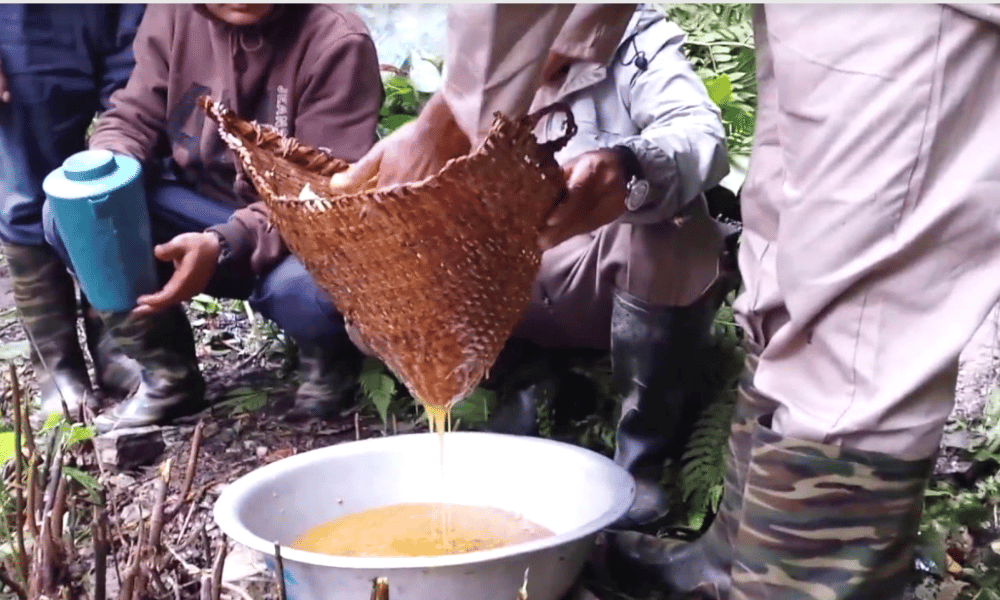
Experiencing honey hunting as a tourist can be an unforgettable adventure that provides insight into the rich cultural heritage, traditional practices, and breathtaking landscapes of regions where honey hunting is practiced. In countries like Nepal, honey hunting tours have become increasingly popular, allowing tourists to witness the skill and bravery of local honey hunters first-hand. Here's what you can expect when participating in a honey hunting tour:
Local Guide: A knowledgeable local guide, often from the indigenous community, will lead the tour. The guide will provide valuable information about the region, its flora and fauna, and the cultural significance of honey hunting.
Cultural Immersion: Honey hunting tours often include visits to local villages, where tourists can interact with the indigenous people, learn about their customs and traditions, and experience their daily life.
Witnessing Honey Hunting Techniques: Tourists will have the opportunity to observe the traditional methods used by honey hunters, which include the use of handmade ladders or ropes to scale steep cliffs, the use of smoke to calm the bees, and the teamwork required to carefully harvest the honeycombs.
Participating in Rituals and Ceremonies: Honey hunting is deeply rooted in the culture and beliefs of local communities. Tourists may have the chance to participate in or observe rituals and ceremonies performed before, during, and after the honey hunting expedition to ensure a successful and safe harvest.
Tasting the Honey: As part of the tour, you'll likely have the opportunity to taste the freshly harvested wild honey. This unique, unprocessed honey will have a distinct flavor influenced by the diverse nectar sources found in the region.
Hiking and Trekking: Honey hunting tours often involve trekking through beautiful landscapes, ranging from dense forests to high-altitude cliffs. Participants should be prepared for physical challenges and varying terrain.
Supporting Local Communities: Participating in a honey hunting tour can help support local communities by providing economic opportunities and promoting the preservation of their traditional practices and knowledge.
Wildlife and Nature: Honey hunting regions are often rich in biodiversity, providing tourists with the opportunity to observe various plant and animal species in their natural habitats.
Photography: Honey hunting tours offer excellent opportunities for photography, capturing the stunning landscapes, unique cultural experiences, and the bravery of the honey hunters.
Safety and Responsible Tourism: It's essential to prioritize safety and practice responsible tourism when participating in a honey hunting tour. Follow the guidance of your local guide, respect local customs and traditions, and avoid disturbing the bees or their habitat.
By participating in a honey hunting tour, you'll have the chance to witness a unique cultural tradition, support local communities, and create lasting memories of your once-in-a-lifetime adventure.
Responsible and sustainable tourism plays a crucial role in preserving the traditional practices of honey hunting and supporting local communities while minimizing the negative impacts on the environment and the honeybee population. Here are some opportunities and guidelines for promoting responsible and sustainable tourism in honey hunting:
Support Local Guides and Operators: Choose locally-owned tour operators and hire local guides who have a deep understanding of the region, culture, and honey hunting practices. This helps support the local economy and ensures the cultural authenticity of your experience.
Small Group Tours: Opt for small group tours to minimize the impact on the environment and the local communities. Smaller groups can also enhance your experience, allowing for better interaction with the honey hunters and a more intimate understanding of the honey hunting process.
Educate Yourself: Learn about the local culture, traditions, and environment before embarking on your honey hunting tour. Understanding the importance of honey hunting in the local communities will help you appreciate the experience and engage more responsibly.
Respect Local Customs and Traditions: Be respectful of the local customs, beliefs, and practices related to honey hunting. This may include participating in or observing rituals and ceremonies, dressing modestly, and seeking permission before taking photographs.
Minimize Environmental Impact: Practice "Leave No Trace" principles by not littering, staying on designated trails, and avoiding disturbance to the natural environment and wildlife.
Contribute to Conservation Efforts: Support local conservation projects and organizations working to protect the honeybee population, their habitats, and the local ecosystems. This can be done through donations, volunteering, or simply raising awareness.
Promote Sustainable Harvesting: Encourage sustainable honey harvesting practices by supporting tour operators and honey hunters who follow guidelines to ensure the survival of the honeybee colonies and minimize damage to their habitats.
Purchase Responsibly: Support local artisans and beekeepers by purchasing honey and other products directly from them. This ensures a fair income for the community and helps preserve traditional craftsmanship.
Share Your Experience Responsibly: Share your honey hunting experiences with friends, family, and on social media, emphasizing the importance of responsible and sustainable tourism. This can help raise awareness about the cultural and ecological significance of honey hunting and promote sustainable practices.
By embracing responsible and sustainable tourism opportunities in honey hunting, you can contribute to the preservation of local traditions, support the livelihoods of indigenous communities, and help protect the environment and the honeybee populations that play a crucial role in the ecosystems they inhabit.
Nepal is a prime destination for honey hunting due to its diverse flora and the presence of the giant Himalayan honey bee (Apis laboriosa). The following are some popular honey hunting destinations in Nepal, where tourists can witness and experience the ancient tradition of honey hunting:
Lamjung District: Lamjung, situated in the western part of Nepal, is home to the Gurung people, who are renowned for their honey hunting skills. The cliffs in the region provide an ideal habitat for the giant Himalayan honey bee. Bhujung and Pasgaun are two prominent villages in Lamjung where honey hunting is practiced.
Kaski District: Kaski is another popular honey hunting destination in western Nepal. The region's diverse flora provides a rich nectar source for the honeybees. Sikles and Ghale Gaun are two well-known villages in Kaski where honey hunting expeditions can be observed.
Myagdi District: Myagdi, located in the Dhaulagiri Zone of western Nepal, is famous for its honey hunting tradition. The region's steep cliffs are home to numerous honeybee colonies. Nangi and Mohare are two villages in Myagdi where tourists can experience honey hunting.
Gorkha District: The Gorkha District, the ancestral home of the Shah Dynasty and the Gurkha soldiers, is another honey hunting hotspot. The district is known for its rich biodiversity and the presence of the giant Himalayan honey bee. Barpak and Laprak are two villages in Gorkha where honey hunting can be observed.
Tanahun District: Tanahun, situated in the Gandaki Province of western Nepal, is another destination for honey hunting enthusiasts. The district's steep cliffs provide an ideal environment for the giant Himalayan honey bees. Bhanu and Bandipur are two popular locations in Tanahun where honey hunting is practiced.
These popular honey hunting destinations in Nepal offer a unique opportunity for tourists to witness the ancient tradition, while also exploring the stunning landscapes, rich biodiversity, and vibrant culture of the country. When visiting these destinations, it is essential to practice responsible and sustainable tourism to help preserve the local traditions, support indigenous communities, and protect the environment and honeybee populations.
Participating in a honey hunting expedition can be an unforgettable experience, but it's essential to be prepared and follow some guidelines to ensure a safe and enjoyable adventure. Here are some tips for tourists participating in honey hunting expeditions:
Choose a Reputable Tour Operator: Research and select a reputable, locally-owned tour operator with experience in organizing honey hunting expeditions. This will ensure a well-organized, safe, and authentic experience.
Physical Fitness: Honey hunting often involves trekking and hiking through challenging terrain. Ensure you are in good physical shape and have the stamina to participate in the expedition.
Appropriate Clothing and Gear: Wear comfortable, breathable clothing suitable for the local climate and terrain. Sturdy hiking shoes, a hat, sunglasses, and sunscreen are essential. Carry a light backpack with water, snacks, and any necessary personal items.
Respect Local Culture and Customs: Learn about the local customs and traditions related to honey hunting, and show respect by following them. This may include observing rituals and ceremonies, dressing modestly, and seeking permission before taking photographs.
Follow Safety Guidelines: Listen carefully to your local guide and follow their instructions for a safe and enjoyable experience. Honey hunting can be dangerous, so do not attempt to participate in the actual honey collection unless instructed to do so by your guide.
Stay Hydrated: Drink plenty of water throughout the expedition to prevent dehydration, especially when trekking at higher altitudes.
Travel Insurance: Purchase travel insurance that covers adventure activities like honey hunting, trekking, and hiking. This will provide coverage in case of accidents or emergencies during your trip.
Environmental Awareness: Be mindful of your impact on the environment by practicing "Leave No Trace" principles, such as not littering, staying on designated trails, and avoiding disturbance to wildlife.
Support Local Communities: Engage with local communities by purchasing honey or other products directly from them. This helps support their livelihood and preserves traditional practices.
Share Your Experience: Share your honey hunting adventure with friends, family, and on social media to raise awareness about this unique cultural tradition and promote responsible tourism.
By following these tips, you can ensure a safe, enjoyable, and culturally enriching experience while participating in a honey hunting expedition. Remember to always practice responsible and sustainable tourism to help preserve the local traditions and protect the environment and honeybee populations.
Supporting honey hunting communities and conservation efforts is crucial for preserving this ancient tradition, maintaining the livelihoods of indigenous people, and protecting the environment and honeybee populations. Here are some ways to support honey hunting communities and conservation efforts:
Participate in Responsible Tourism: When visiting honey hunting destinations, practice responsible tourism by choosing locally-owned tour operators, respecting local customs and traditions, and minimizing your environmental impact.
Support Local Businesses: Purchase honey and other locally-made products directly from honey hunting communities. This not only helps support their livelihoods but also encourages the preservation of traditional skills and craftsmanship.
Raise Awareness: Share your honey hunting experiences with friends, family, and on social media to raise awareness about this unique cultural tradition and the importance of supporting local communities and conservation efforts.
Donate to Conservation Projects: Contribute to local or international organizations and projects working to protect honeybee populations, their habitats, and the ecosystems they inhabit. Financial support can help these organizations conduct research, implement conservation strategies, and raise awareness about the importance of honeybees.
Volunteer: Offer your time and skills to conservation projects or initiatives focused on honey hunting communities and honeybee conservation. Volunteering can provide valuable assistance to these efforts while giving you a deeper understanding of the challenges faced by these communities and the environment.
Advocate for Sustainable Practices: Encourage honey hunters and tour operators to follow sustainable practices, such as responsible honey harvesting methods that minimize damage to bee colonies and their habitats.
Support Community-based Conservation: Empower local communities to manage and protect their natural resources by supporting community-based conservation initiatives. This may include training and capacity-building programs, collaborative management of protected areas, or the establishment of community forests.
Promote Environmental Education: Support environmental education programs that teach local communities about the importance of honeybees, their role in the ecosystem, and the need for sustainable honey harvesting practices.
Research and Collaboration: Collaborate with researchers, conservation organizations, and local communities to study honeybee populations, their habitats, and the impacts of human activities on them. This research can help inform conservation strategies and management plans.
Policy and Advocacy: Advocate for policies and regulations that protect honeybee populations, their habitats, and the rights of indigenous honey hunting communities. This may involve engaging with local and national governments or supporting campaigns and initiatives led by conservation organizations.
By supporting honey hunting communities and conservation efforts, you can contribute to the preservation of this unique cultural tradition while helping to protect the environment and the vital role honeybees play in our ecosystems.
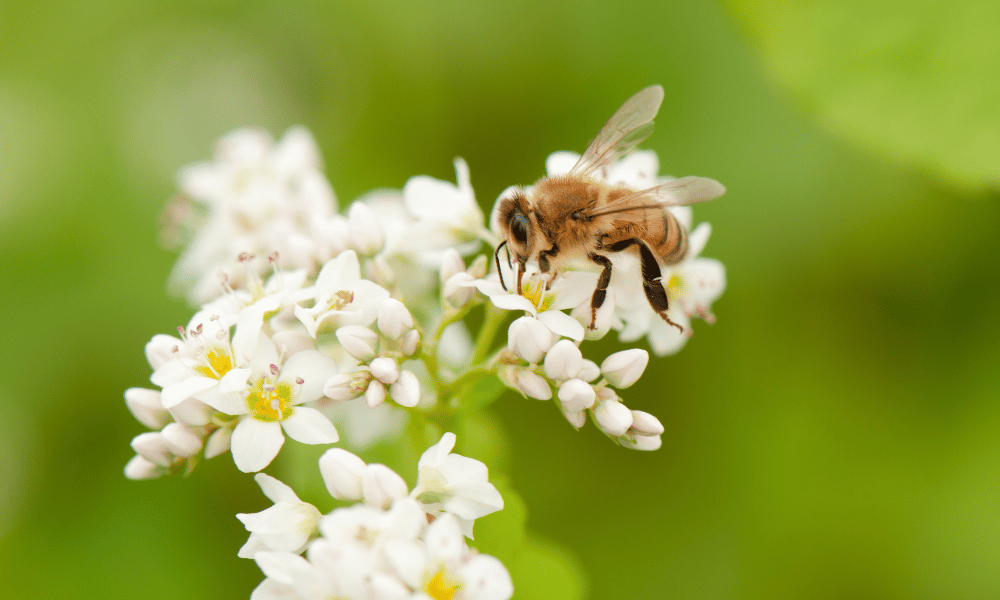
The giant Himalayan honey bee (Apis laboriosa) is the world's largest honey bee species, native to the Himalayas. This bee plays a vital role in the region's ecosystems and is essential for the livelihoods of honey hunting communities. Conservation efforts for the giant Himalayan honey bee and its habitat are crucial for several reasons:
Pollination: The giant Himalayan honey bee is a significant pollinator in the Himalayan region, contributing to the reproduction of various plant species, including wildflowers and agricultural crops. This pollination service is crucial for maintaining biodiversity and ensuring food security in the region.
Ecosystem Balance: The honey bees form an integral part of the food chain in the Himalayan ecosystem, serving as prey for other species like birds and insects. Their decline could lead to an imbalance in the ecosystem and have cascading effects on other species.
Cultural Heritage: Honey hunting is an ancient tradition practiced by indigenous communities in the Himalayas, such as the Gurung and Magar tribes. Conservation of the giant Himalayan honey bee and its habitat helps preserve this cultural heritage and maintain the livelihoods of these communities.
Sustainable Livelihoods: The honey harvested from the giant Himalayan honey bee is a valuable commodity for local communities, providing income and supporting their traditional way of life. Ensuring the survival of these honey bees is essential for the economic well-being of these communities.
Medicinal Properties: The honey produced by the giant Himalayan honey bee has various medicinal properties and health benefits. Conserving the species and its habitat helps ensure the continued availability of this valuable natural resource.
Biodiversity: The preservation of the giant Himalayan honey bee and its habitat contributes to the conservation of biodiversity in the region. Protecting their habitat, which includes forests and flowering plants, helps maintain the balance of the ecosystems they inhabit.
Climate Change Mitigation: The conservation of the giant Himalayan honey bee's habitat, particularly forests, also contributes to climate change mitigation efforts. Forests act as carbon sinks, absorbing and storing carbon dioxide, which helps regulate global temperatures.
Ecotourism: Honey hunting has become an increasingly popular ecotourism activity in the Himalayan region, attracting tourists who want to witness the unique cultural tradition and enjoy the region's natural beauty. The conservation of the honey bee and its habitat is essential for the continued growth and sustainability of this tourism sector.
The conservation of the giant Himalayan honey bee and its habitat is crucial for maintaining biodiversity, supporting local livelihoods, preserving cultural heritage, promoting ecotourism, and contributing to climate change mitigation efforts. Collaborative efforts between local communities, conservation organizations, and governments are vital to ensure the long-term survival of this essential species and its habitat.
Honey hunting in Nepal is an ancient tradition practiced by indigenous communities, particularly the Gurung and Magar tribes, involving the harvesting of wild honey from the nests of the giant Himalayan honey bee (Apis laboriosa) found on steep cliffs and rock faces.
Honey hunting primarily takes place in remote regions of Nepal, such as the Annapurna, Manaslu, and Langtang regions, where the giant Himalayan honey bee colonies are found.
Honey hunting usually takes place twice a year, during the spring (April-May) and autumn (October-November) seasons, when the honey production is at its peak.
Yes, tourists can participate in honey hunting expeditions by joining organized tours led by local guides and experienced honey hunters. These tours provide an opportunity to witness the honey hunting process, learn about the cultural significance of the practice, and support local communities.
Honey hunting is a dangerous and challenging activity due to the risks of falling from great heights, being stung by bees, smoke inhalation, and other hazards associated with the process. However, experienced honey hunters have developed skills and techniques to minimize these risks.
"Mad honey" refers to a psychoactive type of honey produced from the nectar of certain rhododendron species. Consuming this honey in small quantities can induce a mild, temporary intoxicating effect, while larger amounts may lead to more severe symptoms such as hallucinations, dizziness, or nausea.
You can support honey hunting communities by participating in responsible and sustainable tourism activities, choosing locally-owned tour operators, and purchasing honey and other products directly from local communities. Raising awareness about the importance of honey hunting and the need to conserve the giant Himalayan honey bee and its habitat also contributes to the preservation of this ancient tradition.
Wild honey from the giant Himalayan honey bee is believed to have various medicinal properties, such as antimicrobial, anti-inflammatory, and antioxidant effects. It has been used in traditional medicine for treating wounds, respiratory ailments, digestive issues, and as a general health tonic.
To participate responsibly and sustainably in honey hunting expeditions, choose eco-friendly and locally-owned tour operators, follow the guidance of local guides, respect local customs and beliefs, minimize waste, and adhere to responsible tourism practices.